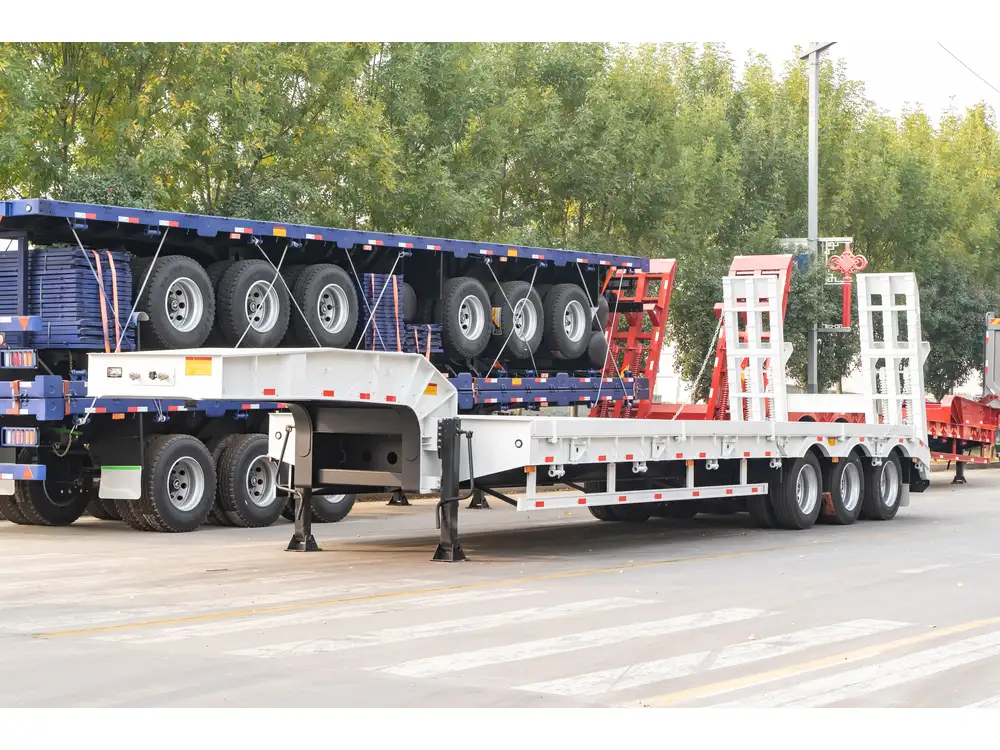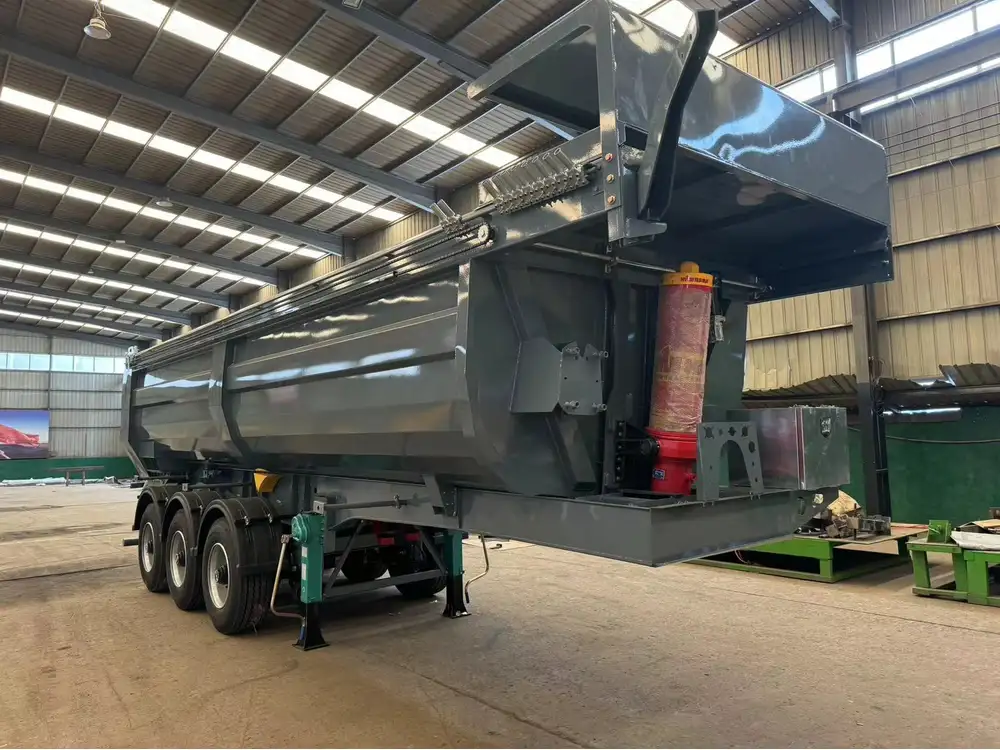Introduction to Semi-Trailer Axles
In the world of transportation and logistics, understanding the components of semi-trailers is crucial for efficiency and safety. At the heart of these massive vehicles lie semi-trailer axles, which play a vital role in their operation. This article delves deep into what semi-trailer axles are, their types, functions, and their significance in the transportation industry.
What Are Semi-Trailer Axles?
Semi-trailer axles are the pivotal component of a semi-trailer, designed to support the trailer’s weight and facilitate its movement. These axles serve not only as structural elements but also play a crucial role in braking, steering, and stability. Typically constructed from high-strength steel or aluminum, they are engineered to withstand substantial loads while providing durability and reliability.

Key Components of a Semi-Trailer Axle
- Axle Shaft: The central shaft that rotates to turn the wheels.
- Wheel Hubs: These secure the wheels to the axle and allow for smooth rotation.
- Bearings: These reduce friction between the rotating axle and stationary wheel hub.
- Spindles: Extensions of the axle shaft that provide attachment points for the wheel hubs.
- Suspension System: Often integrated with axles, providing cushioning to absorb road impacts.
Importance of Quality Axles in Transportation
The selection of semi-trailer axles significantly influences the overall performance of the vehicle. Quality axles ensure efficient weight distribution, reducing wear on tires and enhancing fuel efficiency. Moreover, they are essential for maintaining road safety, as inadequate axles can lead to accidents, cargo damage, or increased operational costs.
Types of Semi-Trailer Axles
Various axle configurations determine how weight is distributed across the trailer, affecting performance and compatibility with different loads. Here’s a detailed overview of the primary types of semi-trailer axles:

1. Single Axle Trailers
- Description: This type features one axle, typically used for lighter loads and shorter distances.
- Advantages:
- Easier to navigate in tight spaces.
- Lower maintenance costs.
- Disadvantages:
- Limited weight capacity.
- Higher chances of instability on rough terrain.
2. Tandem Axle Trailers
- Description: Comprises two axles placed closely together, providing better weight distribution.
- Advantages:
- Increased load capacity.
- Enhanced stability and balance.
- Disadvantages:
- More complex maintenance.
- Slightly heavier than single axle setups.
3. Tridem Axle Trailers
- Description: Features three axles mounted together, allowing for maximum load distribution.
- Advantages:
- Highest weight capacity.
- Improved traction on soft ground.
- Disadvantages:
- Increased initial investment.
- Bulkier design may affect maneuverability.

4. Floating Axles
- Description: These axles are designed to move independently of each other, accommodating uneven loads.
- Advantages:
- Enhanced adaptability to load distribution.
- Improved ride comfort.
- Disadvantages:
- Typically more complex and costly.
- May require specialized maintenance.
5. Fixed Axles
- Description: In contrast to floating axles, fixed axles remain in a stationary position beneath the trailer.
- Advantages:
- Simplicity in design.
- Generally lower maintenance needs.
- Disadvantages:
- Less flexibility in load handling.
- Can result in uneven tire wear under certain conditions.
Functions of Semi-Trailer Axles
Understanding the multifaceted functions of semi-trailer axles illuminates their importance in the logistics and transportation sectors. Here are the primary roles they play:

1. Load Bearing
The fundamental function of semi-trailer axles is to bear the weight of the trailer and its cargo. Proper load distribution helps prevent excessive strain on the axle, enhancing the longevity of both the trailer and the load itself.
2. Tire Alignment and Support
Axles are integral in maintaining proper alignment of the tires, which is crucial for performance and safety. Misaligned tires can lead to uneven wear and affect fuel efficiency.
3. Braking Functionality
Semi-trailer axles play a vital role in the braking system. The weight of the trailer and the dynamics of how it interacts with the truck influence the efficacy of the braking process. Braking systems are often designed to distribute braking forces evenly across the axles, minimizing wear and enhancing safety.

4. Suspension Integration
Many semi-trailer axles are connected to the trailer’s suspension system. This design allows for better control over ride quality and delivers a smoother experience, both for the cargo and the towing vehicle.
5. Enhanced Maneuverability
The configuration of axle systems impacts the steering and maneuverability of the semi-trailer. More axles can provide a tighter turning radius, which can be beneficial in urban settings or areas with limited space.
Factors Affecting Axle Selection
When selecting semi-trailer axles, several key factors must be considered to ensure optimal performance and safety. These include:

Load Capacity
Understanding the weight of the cargo that will be transported is crucial. Axles must be chosen based on their respective weight ratings to ensure compliance with regulatory standards and safety protocols.
Road Conditions
The type of terrain traversed will affect axle performance. For instance, trailers designed for rough terrain may benefit from higher-rated axles or those with improved suspension options.
Trailer Design
Different types of trailers, whether flatbed, dry van, or lowboy, have unique structural requirements. The design can dictate which axle configuration is most effective.

Regulation Compliance
Various jurisdictions impose regulations on weight limits and axle configurations. It’s essential to comply with these regulations to avoid legal repercussions and maintain road safety.
Cost vs. Benefit Analysis
While opting for higher-quality or additional axles can incur more upfront costs, the long-term benefits in terms of reduced maintenance, higher payload capacities, and lower operational costs can outweigh initial expenditures.
Maintenance of Semi-Trailer Axles
Regular maintenance is essential to extend the lifespan and functionality of semi-trailer axles. Here are some pivotal maintenance practices:
| Maintenance Task | Frequency | Importance |
|---|---|---|
| Wheel Bearing Inspection | Every 6–12 months | Ensures smooth operation and reduces the risk of failure due to heat buildup or contamination. |
| Brake System Check | Every 3-6 months | Critical for safety; checks pads, drums, and hydraulic lines for wear or leaks. |
| Tire Inspection | Monthly | Identifies signs of wear, misalignment, or deflation, contributing to overall safety and efficiency. |
| Suspension Checks | Bi-annually | Ensures that the suspension system works correctly, which directly affects the axles’ performance and the ride quality. |
| Lubrication | Every 6-12 months | Proper lubrication minimizes friction between moving parts, preventing wear and tear on bearings and joints. |
| Visual Inspections | Monthly | Regular checks for damage, rust, or deformation can catch issues before they lead to catastrophic failures. |

Signs of Axle Issues
- Uneven tire wear
- Excessive vibration while driving
- Unusual noises from the axle area
- Difficulty steering or turning
Conclusion: The Critical Role of Semi-Trailer Axles
In summary, semi-trailer axles constitute a fundamental aspect of transportation and logistics. Their complexity and myriad functions cannot be understated as they contribute significantly to vehicle safety, performance, and efficiency. Selecting the appropriate axles, coupled with diligent maintenance, amplifies operational readiness and fosters enhanced safety standards.
Choosing quality semi-trailer axles is not merely an investment in components; it is an investment in the safety, efficiency, and longevity of the entire transportation operation. Thus, understanding and addressing the intricacies of semi-trailer axles is paramount for manufacturers, transport companies, and stakeholders involved in logistics and supply chain management.



